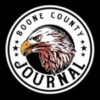Scouting is one of the most important aspects of deer hunting. White-tailed deer are a challenging quarry that requires hunters to study their habits and develop a plan to intersect their movements. Here are a few things to consider when scouting.

Southern Boone student J.D. Clark, got his first deer on November 12, 2016.
Acorns: During the fall, deer abandon other food sources to search for highly prized acorns, especially ones from white oaks. In years when acorn production is high, deer tend spread out, and forage with little movement. When acorn production is low, deer concentrate in areas that produced acorns and travel from tree to tree to find adequate forage. This makes deer more visible to hunters. Look for hoof prints, deer pellets, and broken acorn shells under trees to find active feeding sites. When acorns are on the ground, the area will be used by deer at all times of the day.
Crop Fields: Hunting the edge of crop fields can be effective. Deer feel more comfortable feeding in the open when there is cover nearby. Take notice where forested habitats jut out into fields, especially where two points jut out across from each other. If deer are on the move, they will tend to cross a field from point to point.
When deer enter a field to feed, they prefer secluded, shadowed coves earlier in the evening. Food near cover will always be visited by deer earlier in the evening, before they move into the middle of a big crop field. It’s hard for a hunter to enter a crop field before sunrise without spooking the deer that fed in the field all night, but entering after daybreak can be a good option. Deer feeding in other fields may move through when heading back to their bedding areas for the day.
Soybean fields are great summertime deer viewing areas. As the soybean leaves begin to turn yellow, deer will visit the area less. If a soybean field is left standing into the winter months, deer will return to the area to feed heavily on any remaining bean pods.
Standing corn provides extra cover and travel routes to keep deer concealed. Harvested cornfields, however, can be a great place to find deer scavenging waste grain in fall and winter.
~ Find out more about scouting deer in today’s Journal ~








Facebook Comments